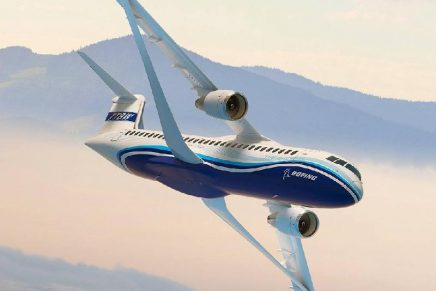Next Generation Experimental Aircraft Becomes NASA’s Newest X-Plane.
The X-66A is poised to become a trailblazer in sustainable aviation, pioneering innovative technologies and design concepts that can significantly reduce greenhouse gas emissions in the aviation industry.
NASA and Boeing have joined forces to usher in a new era of sustainable aviation with the development of the X-66A, the latest addition to NASA’s prestigious X-plane program. This groundbreaking experimental aircraft is specifically designed to help the United States achieve its ambitious goal of net-zero greenhouse gas emissions in aviation by 2050.
The X-66A is built on the foundation of an MD-90 aircraft, which will undergo extensive modifications in collaboration with NASA. The transformation involves shortening the fuselage and replacing its wings and engines to create a revolutionary demonstrator aircraft with exceptional energy-saving and emissions-reducing capabilities. The centerpiece of the X-66A’s design is its Transonic Truss-Braced Wing concept, featuring long, slender wings supported by diagonal struts, and engines mounted underneath.
At the core of this innovative project lies the vision of a new generation of more sustainable single-aisle aircraft, commonly known as the workhorses of the airline industry. By working hand in hand with NASA, Boeing aims to build, test, and fly a full-scale demonstrator aircraft that pushes the boundaries of aviation technology and sets new standards for greener, cleaner, and quieter flights, benefitting both the flying public and American industry.
Bill Nelson, NASA Administrator, highlighted the significance of the Sustainable Flight Demonstrator, emphasizing that it aligns perfectly with NASA’s dedication to aeronautics and climate research. The X-66A is poised to shape the future of aviation and contribute significantly to the global effort to combat climate change, transforming the way we perceive air travel.
The X-66A stands out as the first X-plane project to be explicitly dedicated to achieving net-zero greenhouse gas emissions in aviation. The endeavor aligns with the U.S. Aviation Climate Action Plan, demonstrating NASA and Boeing’s commitment to making a substantial impact on the environmental footprint of the aviation industry.
Bob Pearce, associate administrator for NASA’s Aeronautics Research Mission Directorate, underlined the significance of these transformative aircraft concepts in achieving the net-zero aviation emissions goal by 2050. The X-66A represents a vital step towards realizing this goal by showcasing energy-saving technologies and emissions-reducing innovations that can potentially revolutionize the aviation sector.
The coveted X-plane designation was conferred upon the X-66A by the Air Force in recognition of its potential to validate the Transonic Truss-Braced Wing configuration. When combined with other advancements in propulsion systems, materials, and systems architecture, this cutting-edge design has the potential to reduce fuel consumption by up to 30% compared to today’s best-in-class aircraft.
One of the critical aspects of the project is its focus on single-aisle aircraft, which currently contribute nearly half of the worldwide aviation emissions due to their extensive use. By developing sustainable designs and technologies for this aircraft category, the X-66A could trigger a profound transformation in emissions reduction across the aviation industry.
NASA’s involvement with X-plane programs dates back to the 1940s when its predecessor agency, the National Advisory Committee for Aeronautics (NACA), collaborated with the Air Force and the U.S. Navy to pioneer experimental aircraft. The X-66A proudly continues this legacy as the latest addition to the esteemed NASA X-plane family. The Armstrong Flight Research Center in Edwards, California, has also provided invaluable technical expertise and support for several other X-plane initiatives.
Under the Sustainable Flight Demonstrator project, NASA has entered into a Funded Space Act Agreement with Boeing. The agency is set to invest $425 million over seven years, while Boeing and its partners will contribute the remaining funding, estimated at around $725 million. This formidable collaboration will enable the project to tap into both NASA’s technical expertise and Boeing’s aeronautical prowess.
The Sustainable Flight Demonstrator project represents a vital component of NASA’s Integrated Aviation Systems Program and forms a pivotal element of the agency’s Sustainable Flight National Partnership. By fostering the development of groundbreaking and sustainable aviation technologies, this initiative aims to propel the aviation industry into a more environmentally friendly and sustainable future.

The X-66A is the X-plane specifically aimed at helping the United States achieve the goal of net-zero greenhouse gas emissions by 2050. To build the X-66A, Boeing will work with @NASA to modify an MD-90 aircraft, shortening the fuselage and replacing its wings and engines. The resulting demonstrator aircraft will have long, thin wings with engines mounted underneath and a set of aerodynamic trusses for support. The design, which Boeing submitted for NASA’s Sustainable Flight Demonstrator project, is known as a Transonic Truss-Braced Wing. @Nasa x @Boeing




